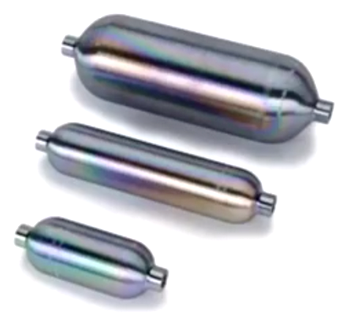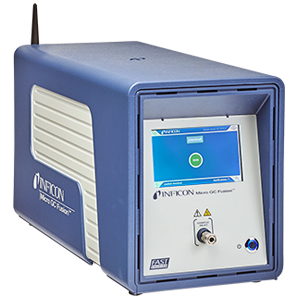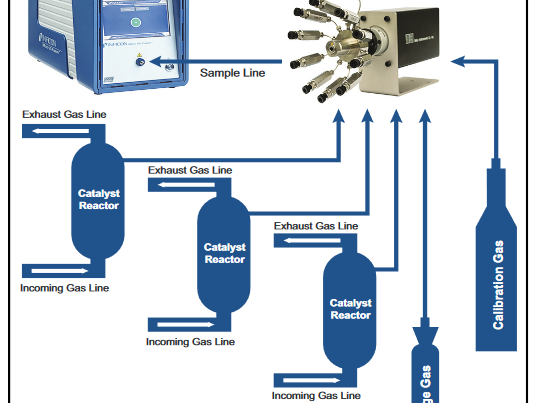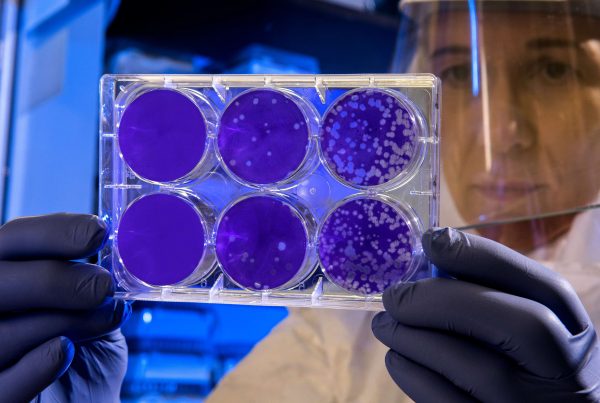This paper presents the value of SilcoNert® 2000 surface treatment that eliminates surface adsorption of active compounds on steel, glass, ceramic and carbon, Titanium, Platinum surfaces.
It can be applied on different supports and is mainly used in analysis for its exceptional characteristics towards reactive compounds such as H2S, NOx, ammonia, mercury and other sulfurous products in general.
Surface treatment was invented in 1987. The aim was to obtain metal columns for chromatography with the low surface activity of glass, with the aim of being able to reduce diameters and obtain solid columns. This know-how has been widely developed and it is now the company Silcotek, leader of this market for analysis, which offers different coatings or “coatings”. We find different commercial names for the same treatment: Silconert® = Sulfinert® = Siltek®
The use of treated tubing and components in the sampling circuit and in the analyzer is unparalleled. It ensures that the compound is not lost by reaction with the media and therefore guarantees its detection. It also allows a direct transfer of the sample without passivation phenomenon. The sample is detected immediately without latency. In addition to the delay in detection and the problems of implicit corrosion, it can occur phenomena of release of the compound whose detection would not be related to the real variation of the sample.
The use of Silconert2000 treatment is recommended for sample transfer or storage. Thus, we naturally find in the range of treated products tubes of different diameters, but also sampling cylinders for sampling.
What is surface treatment ?
This involves applying an inert coating to the surface of the part in contact with the product. This is done under vacuum and at high temperature. The vacuum allows the deposit to be applied uniformly to the part, even in inaccessible areas. A Silane gas is then applied and will deposit a thin layer of Silicon on the surface. This layer will then be functionalized by another more complex gas (-R) to ensure the inactivity of the surface because Si alone still has some activity. Depending on the needs and the type of support, the surface layer is 150 to 1600 nm thick. This thin treatment layer ensures that the dimensional data will not be affected after treatment.
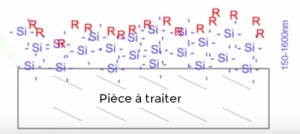
Representation of the surface treatment type Silconert 2000
Case of storage :
In the case of gas storage in sample cylinders for laboratory analysis, the residence time can be very long. The loss of the desired product can be important or total. The following experiment shows performance results from a comparison in which a gas containing 17 ppbv of hydrogen sulfide (H2S) was stored for 7 days in treated, untreated and SilcoNert 2000 stainless steel high pressure sample cylinders. 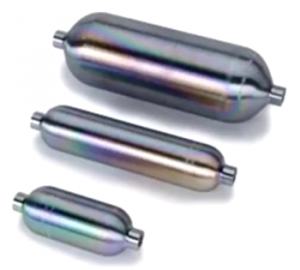 The results show that a sampling system treated with SilcoNert 2000 will reliably store low levels of this active sulfur-containing compound in the process streams for long periods of time. In contrast, hydrogen sulfide degraded rapidly in the untreated cylinder and was completely adsorbed within 24 hours.
The results show that a sampling system treated with SilcoNert 2000 will reliably store low levels of this active sulfur-containing compound in the process streams for long periods of time. In contrast, hydrogen sulfide degraded rapidly in the untreated cylinder and was completely adsorbed within 24 hours.
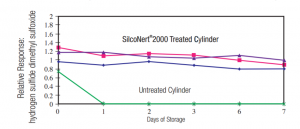
Evolution of the relative H2S / DMSO response in 500mL cylinders over time
Case of transfer
Stainless steel tubes are commonly used to circulate the samples. The adsorption of the reactive compounds is the same and can attenuate the response but also shift it in time which is to be avoided in the case of follow-up of a reaction in line or of a kinetic. The graph below shows the different responses on tubes. The 100 feet tubes are scanned with helium and then, scanned with 1 ppmV of methylmercaptant CH3SH in helium. It is noted that the Silconert 2000 treated tube responds instantaneously and also gives a stable response immediately, which is not the case for stainless steel.
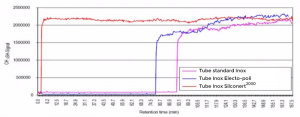
Adsorption of CH3SH on different tubes
Conclusion
The use of treated materials is a consequent advantage for any operation of measurement, transfer, storage of reactive gases. The Silconert 2000 treatment is particularly suitable for trace analysis. It should be noted that this coating resists a temperature of 450°C and is therefore compatible with many operating conditions. More information on our website.
See you soon for more information on the “Dursan” complementary coatings. In the meantime, do not hesitate to contact us.

